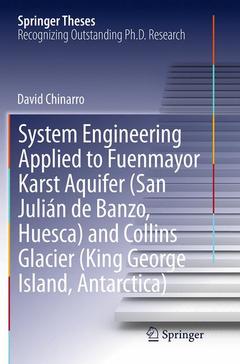Description
System Engineering Applied to Fuenmayor Karst Aquifer (San Julián de Banzo, Huesca) and Collins Glacier (King George Island, Antarctica), Softcover reprint of the original 1st ed. 2014
Springer Theses Series
Language: English
Subjects for System Engineering Applied to Fuenmayor Karst Aquifer...:
Publication date: 09-2016
Support: Print on demand
Publication date: 08-2014
161 p. · 15.5x23.5 cm · Hardback
Description
/li>Contents
/li>Comment
/li>
This thesis tackles fundamental questions concerning the discharge of a pre-Pyrenean karst aquifer system and an Antarctic glacier system, utilizing a system engineering methodology and data-driven approach. It presents for the first time a simplified and effective linear transfer function for karst aquifers. The author provides detailed wavelet spectrum results, which reveal certain non-linearities in drought periods. In addition, structures based on Hammerstein-Wiener blocks have yielded a nonlinear model that is substantially more efficient than its linear counterparts.
Another pioneering finding is the use of wavelet coherence between glacier discharge and air temperature to estimate SEC (Seasonal Effective Core) boundaries. The yearly SEC is essential to obtaining a model based on Hammerstein-Wiener structures, which offers considerably higher efficiency. Moreover, two different types of glacier dynamics have been discovered (over damped and overshoot), depending on the annual cycle and the SEC average temperature.




